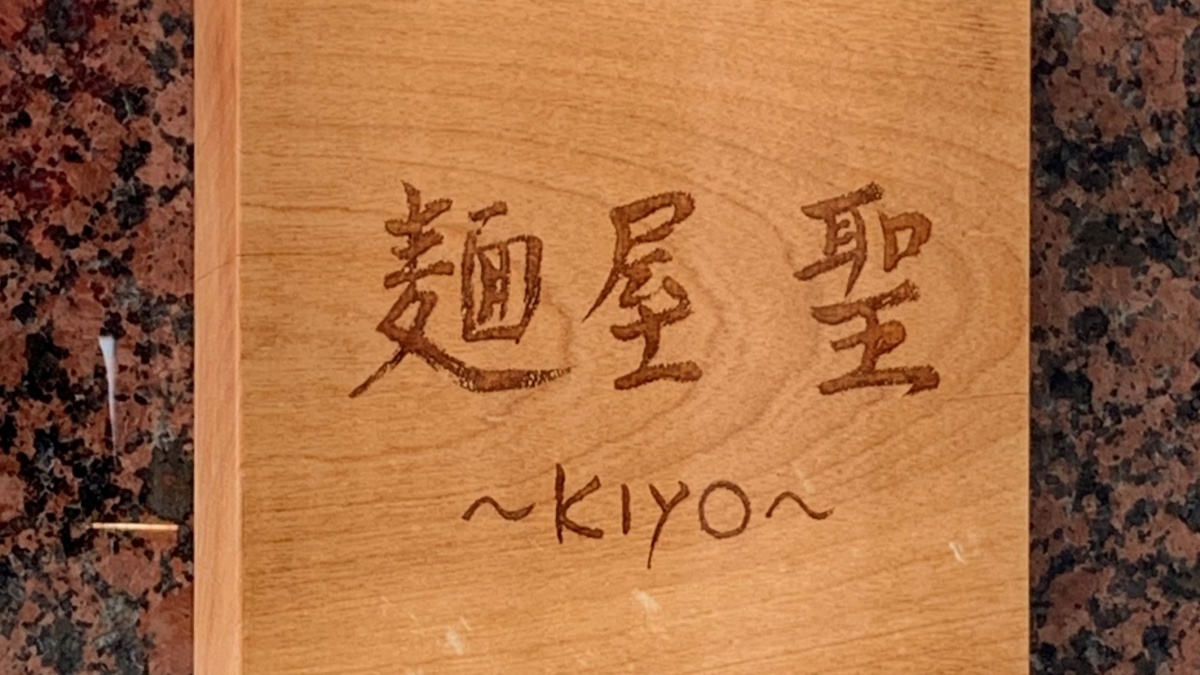This article introduces “Menya kiyo,” which opened in Ichijoji Temple, which is known as Kyoto’s ramen hotspot.
This store is a sister store of “Menya Yuko” in Karasuma Oike, and opened in 2018. Like Yuko, the store is built more like a stylish cafe than a ramen shop.

The impression you get when you enter the store is simple and clean. There are 16 seats in total, including counter seats (6 seats) and table seats (2 seats for 4 people and 1 seat for 2 people), which is about the same number of seats as a typical ramen restaurant. There is plenty of space between seats, so you can enjoy your meal in peace.
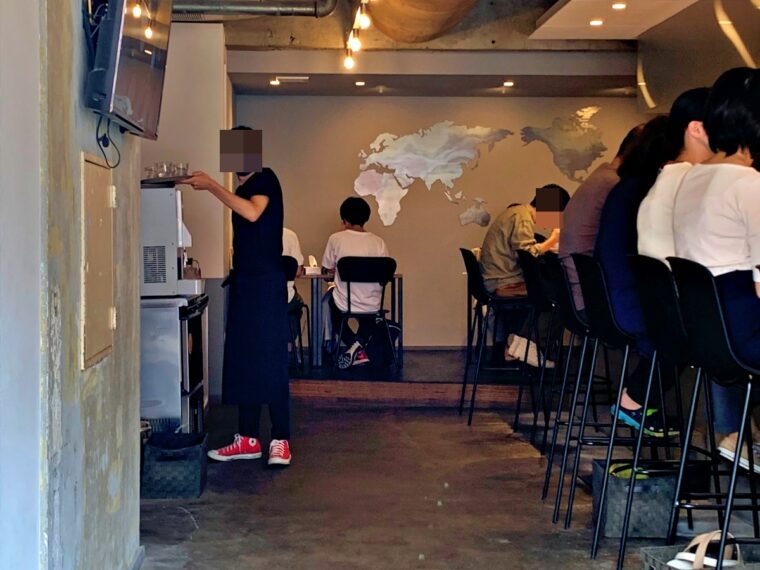
The concept of “Menya kiyo” is to share Kyoto’s dashi culture with the world, and we serve soy sauce ramen made with local Kyoto soy sauce.
The noodles used for the ramen are the same as those used at Menya Yuko, and are homemade whole grain noodles. Unlike “Yukou”, the chashu is stewed pork.
The menu includes “Gift,” “Simple,” and “Sirusi,” but even just hearing the menu names makes you wonder, “What kind of ramen?” However, the menu names generally include explanations like the one below, so you can make some predictions.
- Gift: Soy sauce-based ramen that brings out the flavor of “clams” and “flying fish”
- Simple: Soy sauce ramen packed with the flavor of “katsuo”, “kelp”, and “meat”
- Shirushi: Ramen with the unique bitterness and sweetness of soy sauce (the secret seems to be in the way it is simmered)
I had a hard time deciding which one to order, but I thought that Kyoto’s soup stock culture would include “bonito” and “konbu”, so I decided to order “simple.” My wife, who came with me, saw the most popular item and decided on it as a “gift.”
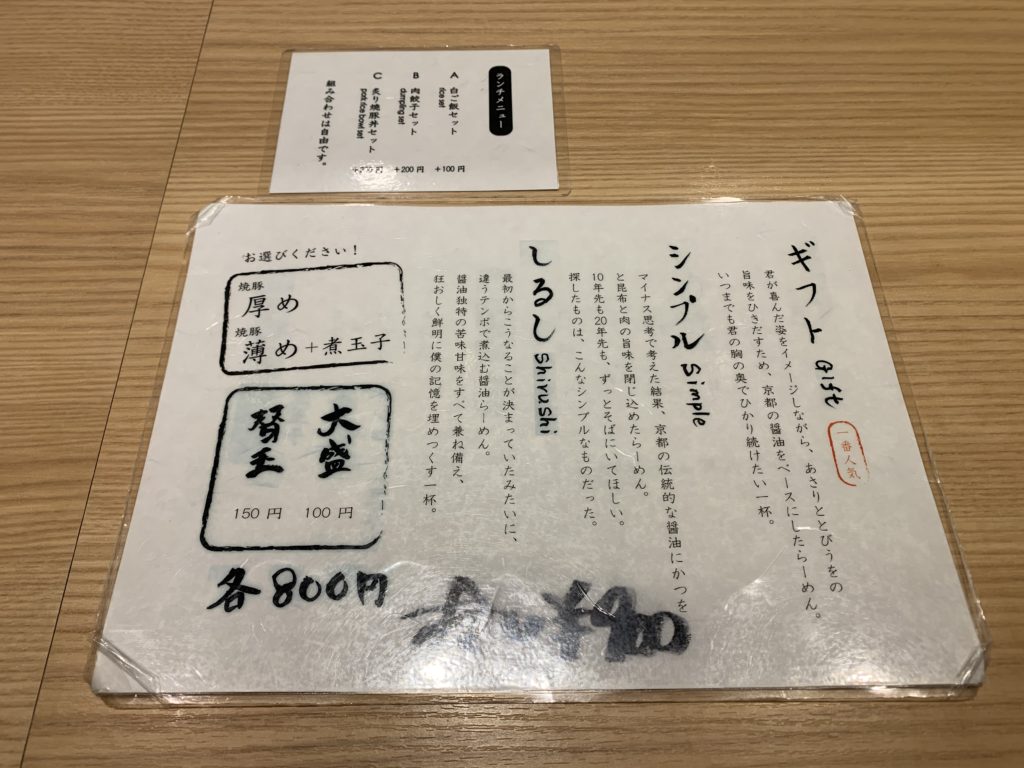
Ramen called “Simple”
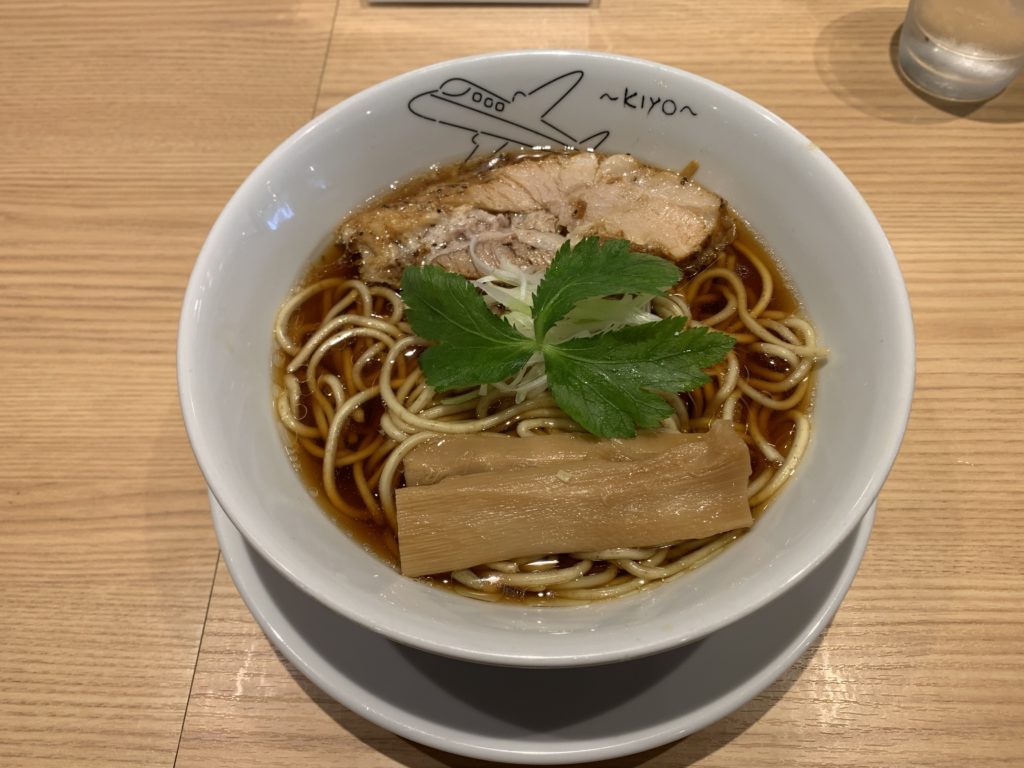
This is the “simple” I ordered. The menma and chashu were as expected, but I was a little surprised to see “mitsuba” instead of green onions.
Speaking of Kyoto ramen, the brand “Kujo Negi” is the standard, but considering that “mitsuba” is often used in Kyoto cuisine’s sumashi soup and stews, it may be a ramen (dashi) with Kyoto cuisine in mind.
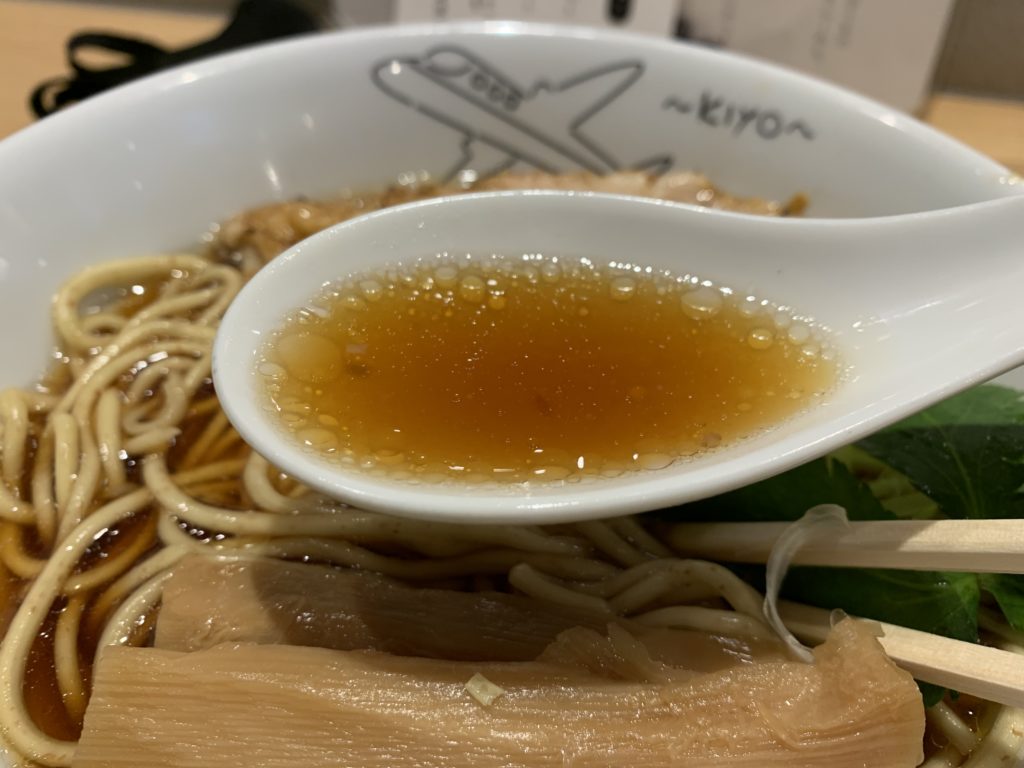
As you can see, the soup has a rich and light flavor, very similar to the dashi stock used in Kyoto cuisine.
The char siu is cut into pieces in the kitchen behind the counter, and comes in either thick or thin slices, and if you order the latter, it comes with a boiled egg.
It depends on your preference, but since the char siu that has been simmered until melty is quite rich, if you want to pair it with a light soup, I feel that thinly sliced char siu and a boiled egg go well together. (By the way, what I ordered was thick-sliced char siu.)
The thick menma has just the right amount of chewiness, and has a light flavor that goes well with the light soup.
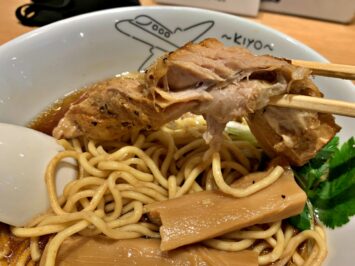
厚切りのチャーシュー
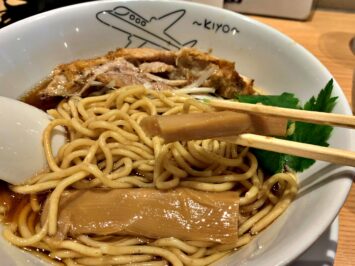
厚めのメンマ
Ramen called “gift”
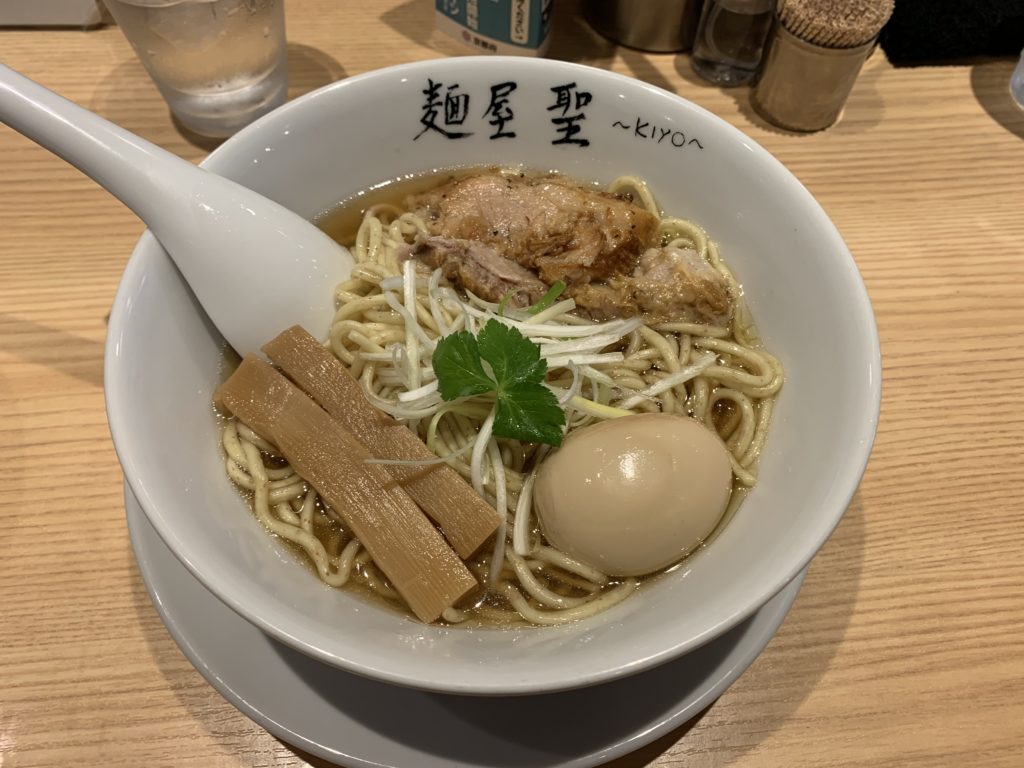
This is the “gift” that my wife ordered, topped with thickly sliced char siu and boiled egg. I only wanted to see the taste of the soup, so I tasted just a little bit.
As it is the most popular dish, the taste of the clams is indescribably delicious. I’ve had salt ramen with seafood, but this wasn’t salt ramen, it was “clam ramen,” which didn’t contain clam meat, and it reminded me of sake-steamed or pot-yaki sauce.
In conclusions
This time, we introduced “Menya kiyo” in Ichijoji, Kyoto’s ramen hotspot. With the concept of disseminating Kyoto’s dashi culture to the world, the soy sauce ramen, which uses local Kyoto soy sauce, has something in common with Kyoto cuisine.
The store has a cafe-like interior, and the seats are spacious and spacious. The menu names are not very easy to understand, but the descriptions for each item explain the theme of the ramen.
The overall light soup seems to be inspired by Kyoto cuisine, and has a taste unique to Menya Yuko Group.
Please check out the article about the main restaurant “Menya Yuko” here. Both are very popular ramen restaurants, so it might be a good idea to compare them.

